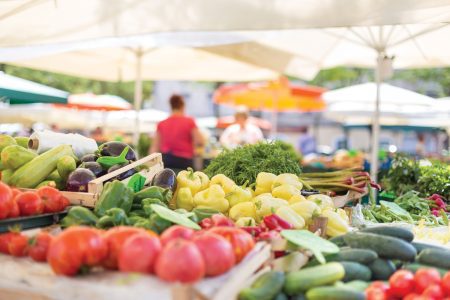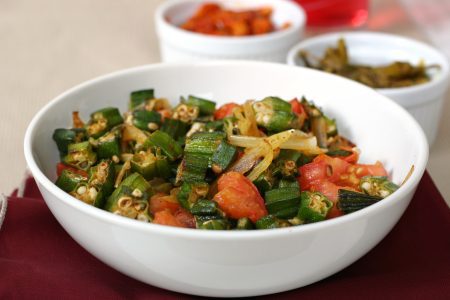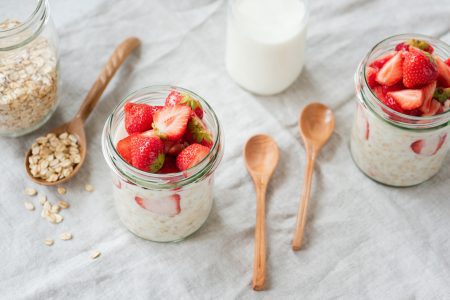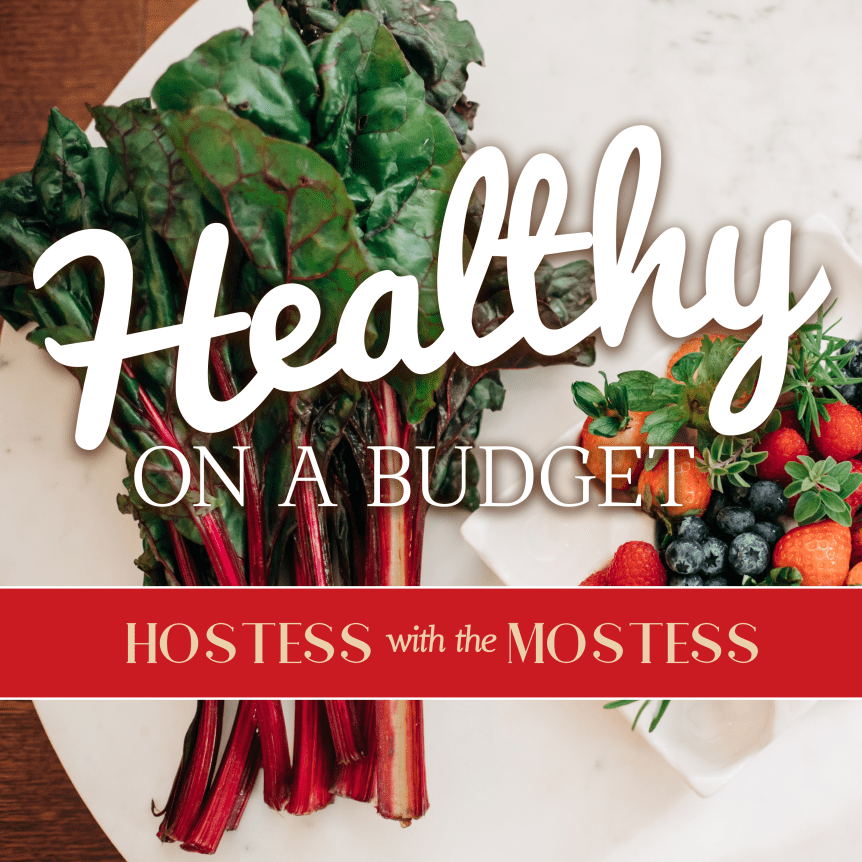It’s not all about kale I promise! With the rising grocery cost and in some cases, limited availability, the average budget is being blown on groceries before the month is even halfway finished. So what is a family to do? I have laid out some healthy wallet friendly tips on how to maintain a balanced diet while not breaking the bank.
First off: Eat at home more. And what do I always say? Make a list! I love using a well-planned out a grocery list to do my shopping! This helps me stay within budget and save money while sticking to a healthy eating plan. The trick is to use what you already have at home and know which foods go on sale for the week and plan healthy affordable meals using those ingredients. That way you’ll be eating healthy on a budget at most times. You’ll also avoid wasting food and any unnecessary spending based on impulse buys.
I’ve put together this guide and list of foods to help you stay healthy and save money on foods that give you a well-balanced diet. The key is to eat everything in moderation and diversify as many different healthy foods from different groups as much possible to get the optimal amount of nutrients that are beneficial for your health.
Pro Tip: Buying local can save money and ensure quality. That is my first rule of thumb. Farmers markets, local farms for beef, poultry, and eggs are often less expensive than the grocery store.
Buying Fruits & Vegetables on a Budget
There have been many debates between buying fresh vegetables versus frozen vegetables. Many of us have busy lives and this leaves us with no time to cut and prepare fresh vegetables. What’s worse is fresh may end up going to waste when we don’t consume them on time. Another problem we face is not having the budget.

In a perfect world, we would be eating fresh organic fruits and vegetables that are freshly picked at its optimal ripeness. Unfortunately, we don’t live in this perfect world. If you’re on a tight budget and/or don’t have the time, it is recommended to buy whole fruits and vegetables that are on sale and stock a reasonable amount of frozen alternatives.
Before you think frozen fruits and veggies are unhealthy and not nutritious, think again. Frozen fruits and vegetables have great nutritional value and are generally healthier than canned. Depending on the situation, frozen fruits and vegetables may even have more nutritional value compared to what they call “fresh” at your grocery store. According to source, studies on the relative benefits of fresh and frozen show no consistent differences. Having that said, you may want to aim for a good balance by mixing up fresh fruits and veggies with frozen ones. I have also learned to love the cheaper produce options like apples, oranges and carrots. They are all still delicious and can be eaten in a variety of ways such as salads, smoothies, baked apples, etc.
If your budget allows it, it may be best to buy organic according to EWG’s dirty list. But if you are concerned and can’t afford organic, the good thing is you can still consume many conventionally grown fruits and vegetables (the list above) without having to pay a premium. Sometimes you may be lucky to catch a few organic foods on sale for the week which work out to be the same price as the conventional. Whether you choose organic or not is a personal choice depending on your financial situation and how you feel about organic food. Growing your own produce if you have the space, is always a great money saving option that lets you control chemicals.
MONEY SAVING TIP: To save money and time, consider buying frozen fruits and vegetables and going for fresh ones when they are on sale.
You could also keep a lookout for frozen organic fruits that go on sale. They may be cheaper than or the same price as the conventional frozen fruits that aren’t on sale.
Frozen fruits and veggies may give you more nutrients compared to the “fresh” ones at your local grocery store because the fresh fruit or vegetable loses almost half the nutrients in the first 24 to 48 hours of picking. Whereas frozen veggies retain a lot of its nutrients when they are picked and frozen during their prime time.
Beans and Legumes
Not only are beans and legumes one of the cheapest and most affordable staple foods, but they have so many health benefits that many people overlook. Most of these are full of protein which is essential for your muscles and folate to make healthy red blood cells. Beans are also known for reducing cholesterol, decreasing blood sugar levels and hence managing diabetes. They are super budget-friendly and storable so I recommend stocking a few when they go on sale. Beans, in general, are so easy to add to almost any rice, quinoa or pasta dish. If you love Mexican-inspired foods, go ahead and load them in your burrito bowl! Having that said, don’t hesitate to include these beans and legumes to your grocery shopping list regardless of your budget.
PRO TIP: For most beans, buying the dried version to boil at home is probably healthier than canned beans. I prefer dried beans and cooking them myself to minimize any chemicals or preservatives that are present in canned foods.
In terms of costs, dried beans are generally healthier and more budget-friendly. The only catch is it requires a longer time to prepare and it isn’t as convenient as canned beans. You could also consider buying frozen peas which IMO are better than canned.
Nuts
Nuts contain healthy fats, fiber, and protein. Nuts are a healthy snack option and you may think they are expensive foods, but the good thing is it doesn’t require a lot per day to reap the health benefits. According to Health Line, eating only a handful of nuts each day could reduce the risk of heart disease. That’s about one ounce, or 20 to 22 whole almonds or hazelnuts. This number is equivalent to 15 to 17 cashews.
This turns out to be as low as $0.32 per day depending on which nuts you buy and the volume. You could even reduce that to $0.16 a day by eating half the recommended amount (10 to 12) each day. Assuming you don’t have any nut allergies, including them into your diet is better than none at all.
I highly recommend going for the non-salted – raw version. You may even want to choose organic if your budget allows it.
BUDGET TIP FOR BUYING NUTS: If you’re tight on money and really can’t afford it but still want to eat healthy on a budget, consider adding non-salted peanuts into your diet.
Peanuts, technically a bean or legume and not a nut, have very similar health benefits to healthy nuts. They are high in fats but contain mostly the healthy fats and are a good source of protein. Like other nuts, peanuts are filling and are good for weight loss when consumed in moderation.
BUDGET TIP FOR BUYING SEEDS: Similar to buying nuts, if you’re really tight on cash but eating healthy on a budget is important to you, consider buying non-salted roasted sunflower seeds.
Sunflower seeds don’t get the shining spotlight like chia seeds do (thanks to marketing) and are often overlooked because they are commonly available and often viewed as “junk” or “low income” foods. However, they are packed with lots of good nutrients like vitamin E, manganese and selenium.
The only downside is many sunflower seeds are widely sold in packages that contain high levels of sodium. Look for unsalted sunflower seeds and remember what I always say… like any other foods, eating in moderation is key to a well-balanced diet.
Money Saving Tip – Buy Bulk: Bring your own containers and save money on foods like rice, pasta, beans, coffee, and more. Bulk stores have come a long way in the past few years. You used to have to use their plastic bags for everything you bought. Now many stores will let you bring your own containers. They will weigh them and record the weight, then you can fill them up with whatever you want. Bulk stores are also a great place to buy nuts and seeds at a lower price. Whole cashews can be expensive! Might as well save money on them.
Fresh Herbs
This is something you should definitely grow on your window seal or back porch. Seeds are inexpensive and you’ll have fresh herbs all year long.
Herbs are a fantastic way to add flavor and color to any sort of dish or drink, whether sweet or savory, without adding fat, salt or sugars. In addition to flavor and color, they each also tend to have their own set of health-promoting properties.
Consuming herbs may help to prevent and manage heart disease, cancer and diabetes. It may also help to reduce blood clots and provide anti-inflammatory and anti-tumor properties. Fresh herbs often contain higher antioxidant levels compared to processed or dried herbs. If you are using herbs in order to harness their health-promoting aspects first and foremost, aim to add your fresh herbs at the end of cooking or as you serve to preserve these properties.
Animal Proteins & Other Budget Friendly Mentions
Protein is a crucial nutrient. However, in this day and age we may find healthy protein sources to be too costly. While some sources of protein are expensive, there are also many affordable alternatives.
Eggs – eggs are one of the most nutrient-dense foods on the planet, and are very affordable with an average price of $2 to $4 per dozen. Not only are they full of vitamins and healthy fats, they are also packed with 6 grams of protein per egg.
Canned Tuna – Fish is a fantastic source of protein and the canned version is no exception. If fresh fish is too expensive for your budget, canned tuna is an excellent way to boost your protein intake without breaking the bank. Most brands of tuna cost around $1 per 5-ounce can.
Plain Greek Yogurt – Yogurt is an excellent source of protein. In fact, an 8-ounce serving provides around 17 grams of protein — nearly double the amount found in regular plain yogurts. Look for brands with a “live and active cultures” label, which means that the yogurt contains beneficial probiotics that can improve gut health and even help you lose weight. Buying larger containers is a great way to save money, as 24 ounces of plain Greek yogurt costs about $5.
Ground Meats – Turkey, Chicken, Beef. Usually much more affordable than a whole cut of meat. Not only are they generally lean but they are adaptable and can be used in many recipes.
Oats – Oatmeal is a superhero! Oats are little nutritional powerhouses. They are very nutrient dense, high in soluble fiber, can lower cholesterol and have more protein and fat than most grains. Super inexpensive and filling.
It is definitely possible to eat healthy on a budget – you just need to take a look at your online flyers to see what deals are on the for the week and create a Meal Plan! Remember the LIST!
I also recommend using coupons and money-saving apps whenever possible. There are some foods that are already dirt cheap even without a sale but are packed with essential nutrients such as beans, legumes, frozen fruits, and frozen veggies.Again, the key is knowing which healthy foods you enjoy eating and diversifying as much as possible to gain all the essential vitamins and nutrients. You’re also diversifying in a way that doesn’t expose you to the same chemicals or pesticides that are impossible to get rid of 100%.
Healthy Substitutes
| Artificial Sweeteners | Stevia, Honey, Maple Syrup (100% pure) |
| Bread Crumbs | Whole Oats (pulse in food processor) |
| Butter | Mashed Avocado, Coconut Oil or Macadamia Oil |
| Butter, Oil or Fat in Baked Goods |
Sub ½ with unsweetened apple sauce, mashed banana, or mashed avocado |
| Canned Fruits & Veggies | Fresh or Frozen |
| Chocolate Chips | Cacao Nibs or 100% pure dark chocolate |
| Soy Sauce | Coconut Aminos or Tamari (wheat free soy sauce) |
| Couscous | Quinoa |
| Cow’s Milk | Unsweetened Nut or Seed Milk |
| Crackers for dips | Thinly Sliced Cucumber Rounds |
| Cream Cheese | Cashew Cream or Almond Cream |
| Cream in Savory Soups | Pureed White Beans or Cashew Cream |
| Cream in Sweet Dishes | Coconut Cream |
| Croutons | Nuts |
| Eggs (in baking) |
Soaked Chia Seeds (combining 1 tablespoon chia seeds with 1 cup of water left to sit 15 mins yields a perfect 1 to 1 egg substitute for baking |
| Ice Cream | Almond milk ice cream or banana “nice cream” |
| Instant Oatmeal | Old Fashion Oats or Quinoa |
| Mayonnaise | Veganaise or Unsweetened Greek Yogurt |
| Milk Chocolate | Dark Chocolate or Cacao |
| Pasta | Quinoa, Lentil or Brown Rice Pasta, Zucchini Noodles, Spaghetti Squash |
| Peanut Butter | Fresh Ground Almond or Peanut Butter |
| Sodas | Coconut Water, Kombucha, Unsweetened Tea, or occasionally, club soda with citrus |
| Potato Chips | Kale Chips, Sweet Potato Chips, Beet Chips |
| Sour Cream | Unsweetened Greek Yogurt |
| Store-Bought Cereal | Homemade Granola |
| Store-Bought Salad Dressing |
Homemade Salad Dressings or EVOO & Vinegar |
| Table Salt | Sea Salt, Pink Himalayan Salt |
| Tortillas or Bread | Whole Large Romaine Leaves or other greens |
| Vegetable Oil | Coconut Oil or Macadamia Oil, Grapeseed & Avocado Oils ok in moderation |
| Wheat Flour | Almond Flour or Brown Rice Flour |
| Wheat Tortillas | Organic Sprouted Corn Tortillas |
| White Rice | Brown Rice or Quinoa |
| White Sugar | Raw Honey, 100% Pure Maple Syrup, Pitted Dates (always in moderation) |
| Yogurt | Unsweetened Greek Yogurt, add own fruit, granola, chia, flax |
When to Buy Organic
If choosing animal products, my personal rule of thumb is to only go organic–animal products have the double whammy of contamination from pesticides/insecticides on the animals’ feed (if there are pesticides in the food the animal eats, the pesticides stay in the animal, and eventually get into you if you consume products from that animal) and potential added antibiotics and growth hormones. Antibiotics that are fed to animals also end up in your body and are a nightmare for your healthy gut bacteria, while growth hormones can make your fat cells grow (they are growth hormones, after all.) Having an organic-only rule then it comes to animal products is a personal choice, but I highly recommend it. It also prevents you from over consuming unhealthy foods that you shouldn’t be having in the first place.
When it comes to fruits and veggies, I recommend buying organic whenever you can. However, if that’s not always an option don’t fret one bit–fresh fruits and veggies should still be your number one choice. Always wash your produce thoroughly, and peel any non-organic produce. Also, get familiar with the Environmental Working Group’s Dirty Dozen and Clean 15. These two lists call out the most contaminated and cleanest produce available, even after it’s been washed. If prioritizing a budget, always buy the items listed under the Dirty Dozen organic, and go conventional with the others.
Here’s a quick rundown:
The Dirty Dozen:
Buy these organic whenever possible
Strawberries
Spinach
Kale, Collard & Mustard Greens
Nectarines
Apples
Grapes
Peaches
Bell & Hot Peppers
Cherries
Pears
Celery
Tomatoes
Potatoes
The Clean 15:
Lowest in pesticide residue
Avocados
Sweet Corn
Pineapples
Onions
Papaya
Sweet peas
Asparagus
Honeydew Melon
Kiwi
Cabbage
Mushrooms
Cantaloupe
Mango
Watermelon
Sweet Potatoes
Warm Cauliflower and Spinach
1 cauliflower, broken into florets
2 tbsp olive oil
1 red onion, thinly sliced
3 tbsp sherry vinegar
1½ tbsp honey
3 tbsp raisins
small bunch dill, snipped
Handful of nuts such as walnuts or pecans
1 bag baby spinach
STEP 1: Heat oven to 200ºC/180ºC fan/gas 6. Toss the cauliflower with the olive oil, season and roast for 15 mins. Stir in the red onion and carry on roasting for 15-20 mins more until tender.
STEP 2: While the cauliflower is roasting, mix the vinegar, honey and raisins with some seasoning.
STEP 3: When the cauliflower is done, stir in the dressing, dill, nuts and spinach, and serve.
Okra & Tomatoes
The almighty southern vegetable that grows in every garden, if you planted it or not, it just seems to already be there. Okra has a number of health benefits. It contains a lot of vitamin C, which helps to strengthen the immune system. It’s also an excellent antioxidant, which is beneficial to brain and heart health. Okra is beneficial for lowering cholesterol levels because of the slime it contains. It has a lot of fiber, which is helpful for your digestion. For another thing, it’s very low in calories, which means that if you’re going on a diet or a budget, this vegetable might be your main one.

1 pound okra, ends trimmed and thickly sliced
1 tablespoon olive oil, or ¼ cup water
1 medium onion, chopped
4 cloves garlic, minced
2 sprigs thyme, or ½ teaspoon dried
4 medium tomatoes, chopped
½ teaspoon ground paprika
¾ teaspoon sea salt
1 pinch of Cayenne pepper
½ cup water
Heat oil or water in a large saucepan over medium-high heat. Add the onions and cook for 3 minutes until soft.
Add garlic and thyme and cook for 1 more minute, stirring constantly. Stir in tomatoes and cook for 5 minutes stirring constantly.
Add okras, paprika, salt, pepper, and water. Stir to combine. Cover saucepan and cook for about 15-20 minutes.
Delicious served with rice, mashed potatoes or cornbread.
How to Make the Best Overnight Oats
I make my overnight oats with old-fashioned rolled oats, toasted or regular. Then I add chia seeds for a more pudding-like texture and more fiber, and a spoonful of nut butter to make them extra creamy. (Would you believe that one serving of these overnight oats contains nearly half of your daily fiber requirements?)

Here’s what you’ll need to make overnight oats:
Oats: old-fashioned oats and add a dash of cinnamon. Don’t use instant or quick-cooking oats, because those will turn to complete mush.
Chia Seeds: Technically, these are optional, but I love how chia seeds absorb moisture and make the final product more creamy and luscious. Chia seeds contain healthy omega-3’s and, like oats, lots of fiber.
Nut butter: Almond butter or peanut butter makes these oats even more creamy, while adding delicious savory, nutty flavor.
Milk of choice: You can use your favorite milk here (almond milk, coconut milk from a carton, homemade cashew milk, homemade pecan milk, oat milk or cow’s milk). I suppose you could use water instead of milk, but the final result won’t be quite as creamy or flavorful.
The amount of liquid is key to the final consistency—I like my overnight oats really thick and creamy, with concentrated flavor. If you prefer a looser consistency, add a little more milk.
Fruit: Now that we’ve formed the base of the oats, I like to add fruit. If you’re following my formula with just ½ cup milk and using a fruit that stores well for a few days (as in berries), you can go ahead and toss the fruit on top of the oat-and-milk mixture. If you want to add apples or bananas you’ll need to fold those in with the oatmeal and milk.
Optional sweetener: Overnight oats are generally sweet enough for me as-is. However, add a drizzle of sweetener like maple syrup or honey if that makes your oats more enticing!

